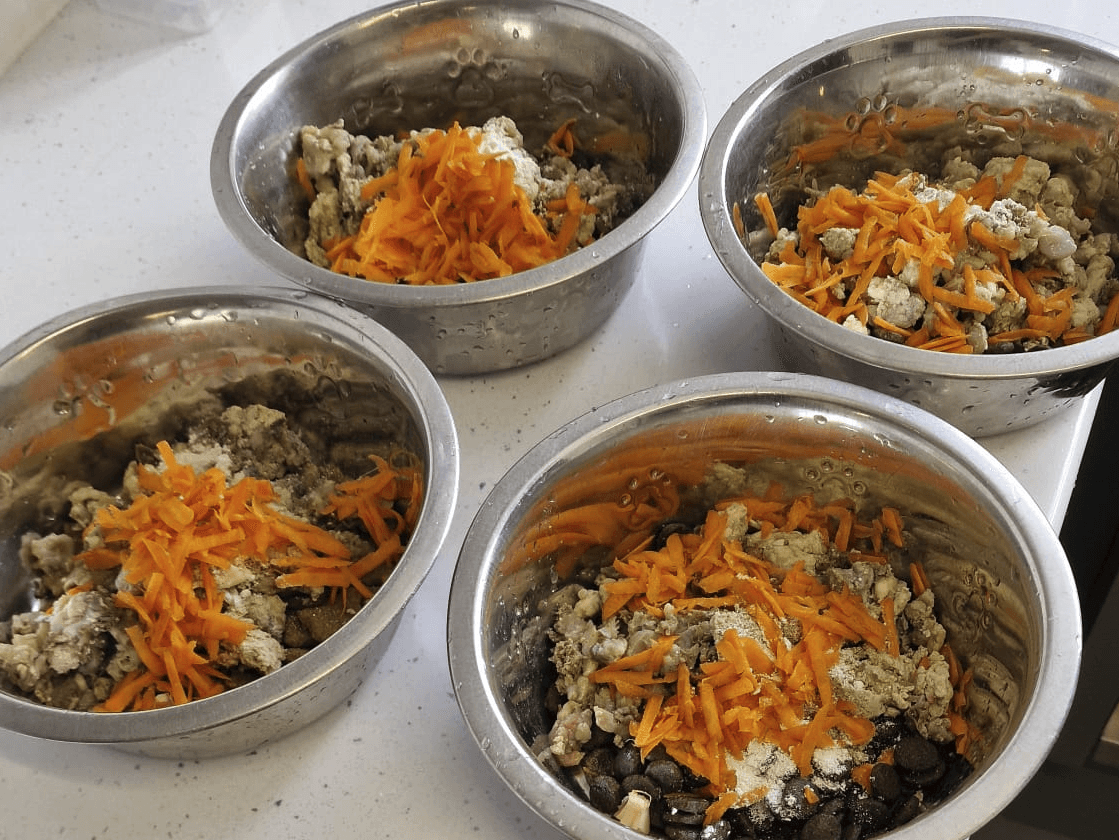Introduction
Many dog owners, especially breeders and those working with performance dogs, are looking for safer, gentler alternatives to conventional chemical wormers and flea/tick treatments. While prescription products have their place, routine chemical dosing can sometimes lead to side effects, reduced fertility, or resistance over time.
The Breckmarsh 6-Week Natural Worming & Flea/Tick Prevention Protocol was developed to provide an evidence-based, easy-to-follow rotation of safe, natural ingredients. It is designed for all life stages – from young puppies to breeding adults – with adjustments for safety and effectiveness.
Why Use a Natural Worming Protocol?
This routine combines published herbal veterinary references with traditional working-dog management. Remedies were chosen to be safe for breeding dogs and suitable for long-term use when rotated sensibly.
Evidence and References for Ingredients
Pumpkin Seed – traditional and referenced use
Contains cucurbitacin, a compound traditionally used to paralyse and help expel intestinal worms.
Reference: Wynn, S. G., & Fougere, B. (2007). Small Animal Clinical Herbal Medicine. Elsevier.
Note: Evidence in dogs is primarily anecdotal; use is based on long-standing herbal practice.
Diatomaceous Earth (DE) – traditional use
Food-grade DE is widely used in holistic care to mechanically damage parasite exoskeletons in the gut and to deter fleas, lice, and mites in bedding.
Reference: Tilford, G., & Wulff-Tilford, M. (2009). Herbs for Pets: The Natural Way to Enhance Your Pet’s Life.
Note: No peer-reviewed canine trials; efficacy is supported through practical application in livestock and pet care.
Garlic (safe amounts) – traditional and referenced use
In small, controlled doses, garlic is noted for its anti-parasitic and insect-repelling properties.
Reference: Wynn, S. G., & Fougere, B. (2007). Small Animal Clinical Herbal Medicine.
Note: Safe dosage is essential to avoid toxicity; not for puppies under 6 months, pregnant, or lactating bitches.
Olive Leaf Extract – traditional and referenced use
Contains oleuropein, studied for antimicrobial and antiparasitic activity in various species.
Reference: Omar, S. H. (2010). “Oleuropein in olive and its pharmacological effects.” Scientia Pharmaceutica, 78(2), 133–154.
Note: Limited direct canine studies; often used by herbalists for general immune support.
Apple Cider Vinegar (ACV) – traditional use
Believed to alter skin pH, making it less hospitable to fleas and ticks when used internally or in sprays.
Reference: Tilford, G., & Wulff-Tilford, M. (2009). Herbs for Pets.
Note: No formal studies in dogs; widely reported in natural pet care literature.
Nutritional Yeast – traditional use
Rich in B-vitamins, historically used to deter fleas and improve coat health.
Reference: Tilford, G., & Wulff-Tilford, M. (2009). Herbs for Pets.
Note: Flea deterrent effect is anecdotal; safe in moderation for most dogs.
How the 6-Week Rotation Works
Instead of using the same remedy continuously, the schedule rotates different ingredients each week. This helps:
- Target different parasite life stages.
- Reduce the chance of tolerance developing.
- Keep the plan easy to follow.
Each life stage – puppies, pregnant bitches, lactating bitches, and stud dogs – has its own version. The weekly focus alternates between core wormers, supportive ingredients, and rest periods.
Example: Stud Dogs
- Week 1: Pumpkin seed + DE daily. ACV, nutritional yeast, DE bedding, neem spray on bedding.
- Week 2: Garlic + carrot. ACV, neem spray, DE refresh in bedding.
- Week 3: Pumpkin seed + DE + carrot. ACV, yeast, DE bedding, neem spray.
- Week 4: Olive leaf extract (low dose) + DE. ACV, neem spray, DE bedding.
- Week 5: Pumpkin seed + garlic + carrot. ACV, yeast, neem spray, DE bedding.
- Week 6: Rest week – observe stools, use ACV and light DE in bedding only.
Gentler versions exist for puppies and breeding bitches, with garlic removed for those under 6 months or pregnant.
Flea and Tick Prevention Built In
Flea and tick control is incorporated into the routine using:
- ACV in food or water (dose adjusted to dog size).
- Nutritional yeast in meals several times per week.
- DE applied to bedding.
- Neem spray used on bedding or around kennel areas.
This reduces reliance on chemical spot-ons while maintaining consistent pest pressure control.
Download the Posters
The protocol is available as printable charts so you can keep them visible in your home or kennel:
- All-in-One Poster – every life stage on one sheet.
📥 Download All-in-One PDF - Large-Print Poster – each life stage clearly laid out across three sheets.
📥 Download Large-Print PDF
Important Notes
- This is not a substitute for veterinary care in cases of heavy infestations or illness.
- Always monitor for any change in appetite, stools, or behaviour when introducing new foods or supplements.
- Fecal testing remains the most accurate way to check parasite status.
- Puppies, elderly dogs, and those with health issues may need additional adjustments.

